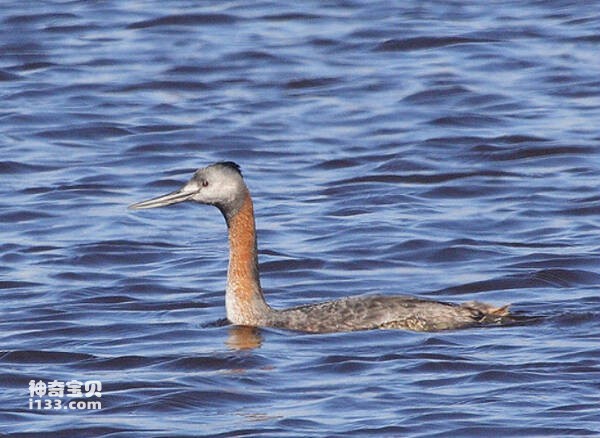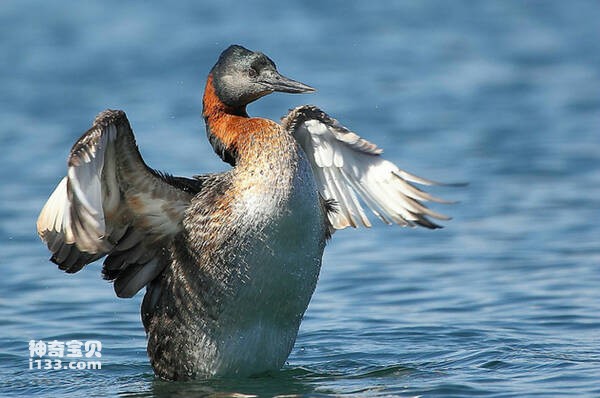Podiceps major
IUCN
LCBasic Information
Scientific classification
- name:Podiceps major
- Scientific Name:Podiceps major,Great Grebe
- Outline:Waterfowl
- Family:
Vital signs
- length:67-80cm
- Weight:1.6-2kg
- lifetime:No textual research information is available
Feature
He has a small tuft of black feathers on his head and reddish-brown eyes
Distribution and Habitat
Origin: Argentina, Brazil, Chile (Malvinas Islands), Paraguay, Peru, South Georgia and South Sandwich Islands, Uruguay.
Traveler: Spain.
It is found mainly in open waters, in rivers surrounded by low elevation lakes and forests, and in estuarine marshes. During the breeding season, they linger in large lakes and surrounding areas with dense vegetation. Outside of the breeding season, most great Grebe move to estuaries and bays, usually on the open sea. Non-breeding birds live along the coast all year round.
Appearance
The Great Grebe is the largest loon in the Grebe family. It is 67-80 cm long and usually weighs about 1600 grams, but can reach a maximum of 2 kg. The back feathers and wings are gray, the head is grayish-black, the neck and chest are brownish-yellow to reddish-brown, and the insides are white to the abdomen. A small tuft of black feathers on the top of his head. His eyes are reddish-brown. Mouth straight, lateral flat, with tip; The nostrils are open and located near the base of the mouth; The wings are short, with 12 primary feathers, the first remains, and the fifth secondary feathers missing. The tail has only a few short soft feathers, or almost no feathers. Place your feet near your hips. Flat tarsus, suitable for diving; Each of the four toes has a wide webbed flap; The claws are blunt and broad, the inner edge of the middle toe is serrated, and the back toe is short, higher or absent than the other toes. The body feathers are short and dense, with moisture resistance; Feathers
Details
The Great Grebe (Podiceps major) is the largest loon in the Grebe family.

Great grebe often gathers in small groups of three to five or more. Good at swimming and diving, and able to walk on land, but slow and clumsy. The flight force is weak, and when taking off on the water surface, it needs to wade in the water and run for a distance to fly, and it can not take off at all on the land. The flight is short and not very high. When flying, the head and neck are straight forward, the feet are trailing behind the tail, and the wings are stirring faster. Sexually active, frequently diving for food when active, resting often motionless floating on the surface of the water, when people swim into the grass or dive underwater to hide, and from time to time in the nearby surface.
Great Grebe is usually active during the day to feed and hunt by diving. The main food is a variety of small fish that compete with cormorants. It also eats shrimp, crustaceans and mollusks and lives along the coast, with nearly half of its food being sea crabs during the winter.

Great Grebe breeds in September-October. A second litter may be hatched in January and February of the following year. Nest in the shallow waters of lakes and ponds with aquatic plants. The nest is a floating nest, usually gnawing the reed as the nest base, the nest is placed in the reed, floating on the water, can rise and fall with the water. The nest is circular, narrow at the top and wide at the bottom. The nest consists entirely of reeds and water plants, and is covered with moss or no internal bedding. The surface of the water is 6.0 to 10.0cm. Each clutch lays 3-5 eggs, sometimes 6 or more. The eggs are white or off-white when they are first laid, and then become dirty white or dirty brown. The male and female birds take turns incubating the eggs, and when they leave the nest, the parent birds cover the eggs with water weeds near the nest. Incubation period of 19-24 days, 23-28 days has also been reported. The chicks become pregnant early and can swim in the water on the second day after hatching. Parents often carry their chicks on their backs, and carry them under their wings when they are frightened.
Listed on the International Union for Conservation of Nature (IUCN) 2013 Red List of Threatened Species ver 3.1 - Low Risk (LC).
Protect wild animals and eliminate wild meat.
Maintaining ecological balance is everyone's responsibility!








